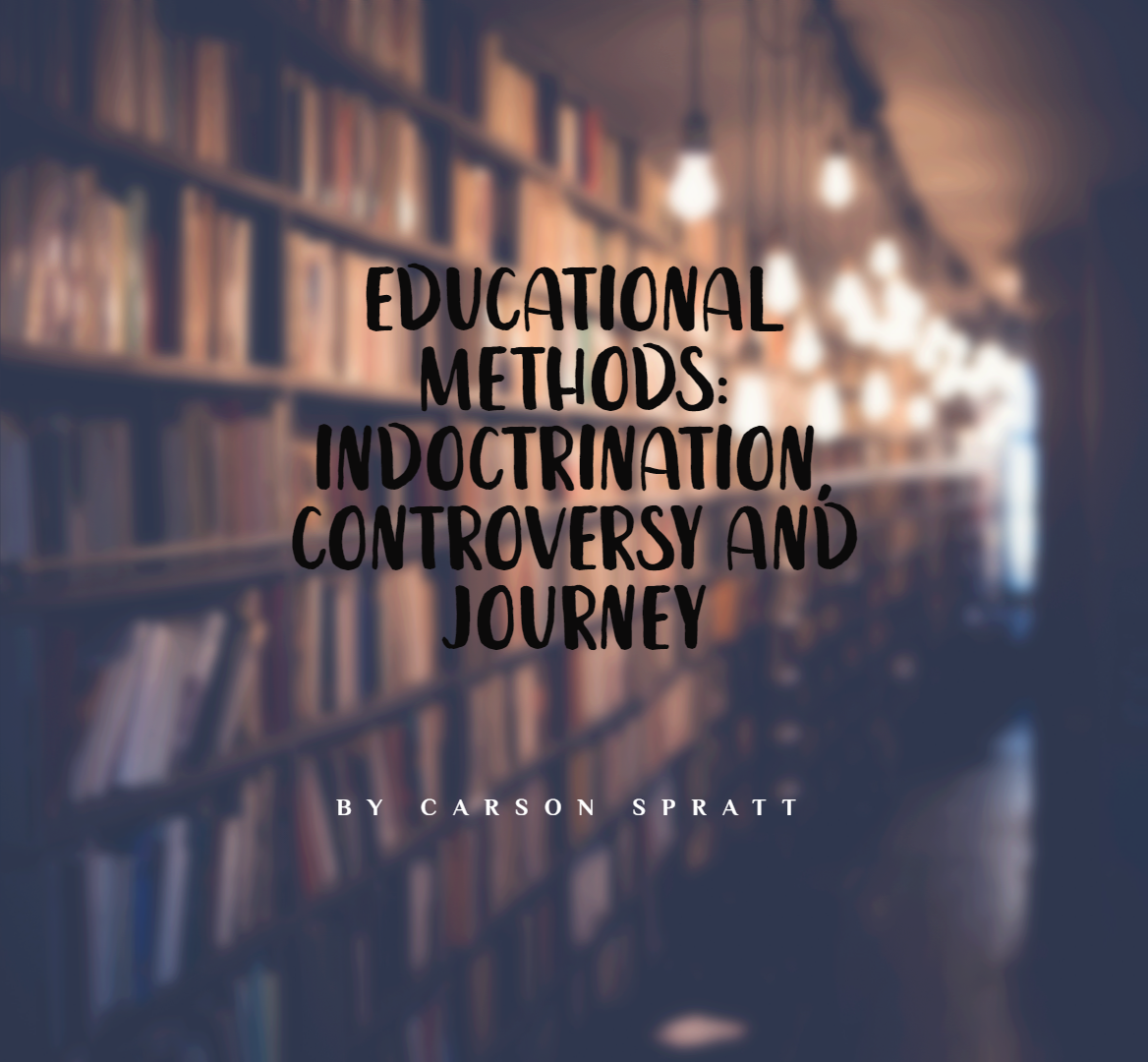Guest Post by Carson Spratt
A car stitches its way down the highway that needles through the shimmering desert. No one but the inhabitants hears the brakes as it slows. It spits two children out in school uniform. “See you later!”
The car drives off, accelerating quickly into oblivion.
The
two kids look at each other. The sun begins to suck sweat out of them.
It is very hot in the wilderness today.
I would like to talk about three different ways of teaching.
The first is indoctrination. You’ve been told to hate it, but it resembles one part of true education just like a changeling resembles the baby the fae stole. Indoctrination drills a single lesson, a single position or idea, into the student’s head. This is the truth and there is no other.
Indoctrination creates blind humans. They cannot recognize other perspectives. They don’t even recognize other perspectives as perspectives. To the indoctrinated man, all other thoughts are insanity. They, and they alone, know the truth.
The second is teaching the controversy. As the idea of Darwinism gained bastion status in public schools, Intelligent Design proponents started a campaign begging public schools to “teach the controversy,” that is, include I.D. alongside Darwinism in public schools, teaching both sides as equal options. This was shot down, of course, but since then I’ve heard the phrase advocated in different education questions, whenever some controversy about some theory or knowledge comes along. Teach the controversy, maintain neutrality. Show both sides, and show that you aren’t biased. All existential and fundamental questions get answered with a shrug. Who’s to say?
Teaching the controversy is dropping your kids off in the wilderness, and expecting them to find their own way to civilization. It’s bad parenting, and it certainly isn’t education. But like indoctrination, there’s a warped resemblance to true learning in that heat mirage.
The third is the journey. All education is a journey from falsity to truth, from wickedness to wisdom, from the fear of everything or nothing to the fear of the Lord. Take your students on a journey, and show them how difficult the road to truth is, but for God’s sake don’t let them walk it alone. It is good for them to know how hard it is to walk through the wilderness. But show them that taking them with you through it, not by stranding them there.
One exercise I do with my class involves taking on the character of an atheist and arguing the problem of evil. I state it both logically and emotionally, as strongly as I can. I pull no punches. Then I end the class and tell them to come back tomorrow with an answer. They spend a few minutes in the wilderness. But the next day they come back, and after I hear their answers, I give them the logical and emotional answer to the problem of evil. Not everyone is able to walk the road, but I take them with me. By the end, they know how desolate that wilderness is, but they have also come out of the wilderness to the garden city.
So, yes, teach the controversy. But also teach the answer to the controversy. They must come through the welter of conflicting ideas to safety on the other side.
So, yes, tell them that what you believe is the truth, is the truth. But show them how you get there, remembering that you too can take wrong turns away from the well-lit path of the Word.
If you do teach them the controversy, then your students are not indoctrinated – they have seen the wilderness. They will know how to recognize the tempter who lives there. But you must also bring them out again to the city, or they will be vacant, lost souls, swept clean and ready to be possessed by the schizophrenia of relativism.
Do you not wonder why so many children are medicated? Why so many mental issues and therapists and irrational and insane people? Why has the world gone mad? Because we weaken our children’s mental immune system through indoctrination, making it incapable of dealing with a new idea; or make it comfortable with holding contradictory ideas – a functional insanity. They either do not know any other city besides the indoctrination they live in, or, if they do make it to the wilderness of controversy, they stay there, wandering. If my teacher didn’t even care enough to show me the answer to the contradiction, does it really matter? They shrug their shoulders and decide that they should just believe whatever they want to believe, since smart people disagree and there seems to be no way out of the controversy. If everything is wilderness, why not call it home?
Let your students get dirt on their boots. But don’t make them walk on their own in the wilderness. From the walls of the city of truth, you can see the slums of indoctrination, and the wilderness of controversy alike – both burning in their own way. Show them how far you have come and they will love the city that you have brought them to – and it is that love of truth that makes them truly educated, that prevents them from letting the city become another slum. Someday your children will issue forth from the city as warriors, and take the city to the wilderness. But that’s a journey for another time.

Carson Spratt is a Rhetoric and Humanities teacher at Logos Online School. He lives in Spokane, Washington, with his wife of seven years, Ellie, without whom life would be inconceivable.













